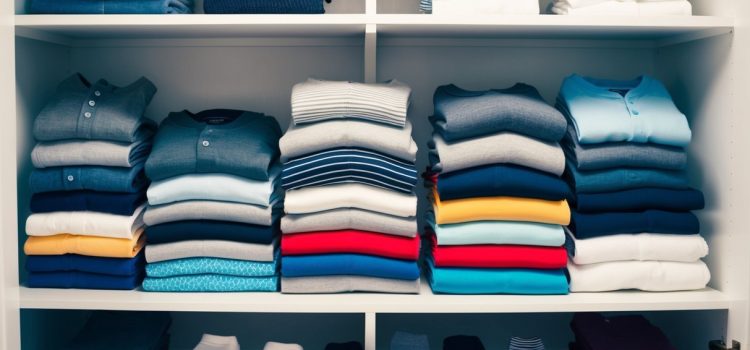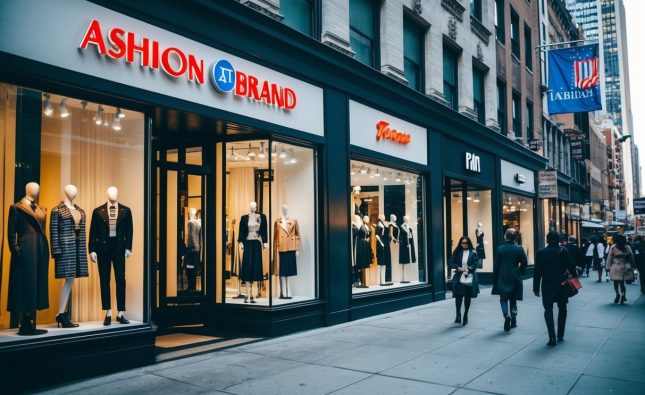
In today’s fast-paced world, quality everyday basics are essential for building a versatile wardrobe without breaking the bank. Identifying the best brands for these staples can lead to a more sustainable and stylish lifestyle. From comfortable t-shirts to durable jeans, selecting the right brands ensures longevity and comfort in daily wear.

Many consumers prioritize functionality and style when choosing basic pieces. Reliable brands often focus on fabric quality, fit, and timeless design. This blog post highlights top brands that excel in offering everyday essentials, making it easier for readers to make informed choices.
The right basics not only enhance personal style but also promote conscious shopping habits. By investing in reputable brands, individuals can create a foundation for their wardrobes that lasts for years. This guide will explore the standout options available in the market today.
Defining Everyday Basics
Everyday basics are fundamental items in a wardrobe that support versatile styling and comfort. These pieces are essential for daily wear and form the backbone of various outfits.
Essential Wardrobe Staples
Essential staples include items like plain t-shirts, well-fitting jeans, and versatile shoes. These pieces are designed to mix and match seamlessly, creating a variety of looks for different occasions.
Common staples include:
- T-Shirts: Basic crew or v-neck styles in neutral colors.
- Jeans: Classic fits such as straight, skinny, or relaxed.
- Shoes: Sneakers, loafers, or ankle boots that offer both comfort and style.
The focus is on items that provide durability, comfort, and lasting appeal. Quality staples can be worn frequently without losing their shape or color.
Quality Versus Quantity
Choosing quality over quantity is crucial when selecting everyday basics. High-quality items tend to last longer and withstand daily wear.
Important factors to consider include:
- Fabric: Natural fibers like cotton or wool often offer better longevity.
- Construction: Look for sturdy stitching and finishing details.
While it may be tempting to buy numerous cheaper items, investing in fewer high-quality pieces can lead to more sustainable fashion choices. This approach not only reduces waste but also ensures a well-curated wardrobe that meets daily needs.
Top Brands for Quality Basics
Quality basics are essential for any wardrobe, and several brands stand out for their commitment to value, transparency, and innovation. Each brand brings its unique strengths, appealing to a variety of consumer needs.
Everlane for Transparency
Everlane is known for its commitment to radical transparency. The brand provides detailed information about its production processes, including costs, factories, and materials. This transparency builds trust with consumers who value ethical production.
The clothing range includes essentials like t-shirts, jeans, and outerwear, all crafted from high-quality materials. Everlane’s minimalist designs are versatile, making them suitable for various occasions. They focus on sustainable practices as well, prioritizing eco-friendly materials and fair labor.
Customer feedback indicates strong satisfaction with product quality and durability, reinforcing Everlane’s reputation in the basics category. People appreciate knowing where their clothes come from and how they’re made, which aligns with a growing demand for responsible consumerism.
Uniqlo for Innovation
Uniqlo is recognized for its innovative approach to basic apparel. The brand frequently incorporates cutting-edge technology into its clothing, such as moisture-wicking fabrics and heat-retaining materials. This focus on functionality appeals to customers looking for both comfort and performance in everyday wear.
Popular items include their HEATTECH line and AIRism fabrics, designed for varying weather conditions. Uniqlo’s basics come in a wide range of sizes and colors, catering to diverse consumer needs.
Affordability is another key factor, with many items priced competitively. Shoppers can stock up on high-quality essentials without breaking the bank, making Uniqlo a go-to option for reliable basics.
H&M for Sustainability
H&M has made significant strides in sustainable fashion, which is evident in its basics collection. The brand actively promotes the use of organic and recycled materials, aiming to reduce its environmental footprint. Their Conscious Collection specifically highlights eco-friendly practices.
Consumers benefit from a wide selection of stylish yet affordable basics, from shirts to trousers. H&M’s commitment to sustainability attracts environmentally-conscious shoppers seeking quality without compromising values.
Further initiatives, like garment recycling and exploring circular fashion, also bolster H&M’s reputation. The brand engages customers in sustainability efforts, reflecting a broader trend in consumer behavior towards responsible purchasing.
Considerations When Choosing Basics

When selecting everyday basics, key factors include material quality, cost-efficiency over time, and the brand’s approach to ethical production. These elements influence not only the longevity of the items but also their impact on the consumer and the environment.
Material and Durability
The choice of material directly affects the durability and comfort of everyday basics. Common materials include cotton, polyester, and blends.
- Cotton is breathable and soft but may wear out more quickly if not blended with durable fibers.
- Polyester is resistant to shrinking and wrinkling but can trap heat and moisture.
Brands that emphasize high-quality materials often provide a more comfortable fit and extended lifespan. It is essential to check product labels for information on fabric composition and care instructions to maintain quality over time.
Cost-Per-Wear Value
Cost-per-wear value is a crucial consideration when evaluating basic items. This metric helps consumers understand how much they are spending relative to the item’s lifespan and frequency of use.
To calculate cost-per-wear, divide the purchase price by the number of times it is expected to be worn. For instance:
- An item costing $40 worn 20 times results in a cost-per-wear of $2.
- An item priced at $20 worn only five times has a cost-per-wear of $4.
Opting for higher-priced items with more versatility can lead to better long-term value. Investing in pieces that can be styled in multiple ways often leads to savings in the long run.
Ethical Production
Ethical production practices increasingly influence purchasing decisions. Consumers are more aware of the environmental and social impact of their clothing.
Brands that prioritize sustainable practices often use:
- Organic materials, which limit exposure to harmful pesticides.
- Fair labor practices, ensuring fair wages and safe working conditions for employees.
Supporting brands that align with ethical standards often resonates with consumers’ values. This conscious choice leads to more thoughtful consumption, impacting the industry positively.
Maintaining Your Basics
Taking care of everyday basics is essential for maximizing their lifespan and appearance. Proper maintenance can save money and ensure that clothing remains functional and stylish.
Care and Repair Tips
Taking care of basics begins with understanding the specific needs of each item. Here are key strategies:
- Read Care Labels: Follow washing and drying instructions to avoid damage.
- Washing Techniques: Use cold water and gentle cycles to preserve fabric quality.
- Stain Treatment: Address stains immediately with appropriate products, like stain removers or natural alternatives (e.g., baking soda).
- Repairing: Small issues like loose buttons or minor tears can be fixed at home with basic sewing kits, which prolong the item’s life.
These practices keep everyday basics looking sharp and reliable.
Longevity and Storage
Storing basics properly extends their lifespan. Consider these effective strategies:
- Hanging vs. Folding: Hang items like shirts and dresses to reduce wrinkles. Fold heavier items like sweaters to prevent stretching.
- Organizing: Use breathable garment bags for seasonal storage, avoiding plastic that can trap moisture.
- Climate Control: Keep storage areas cool and dry. Excess humidity can cause mold and mildew, while extreme heat can degrade fabrics.
Effective storage solutions ensure that everyday basics remain wearable and fresh for years.












